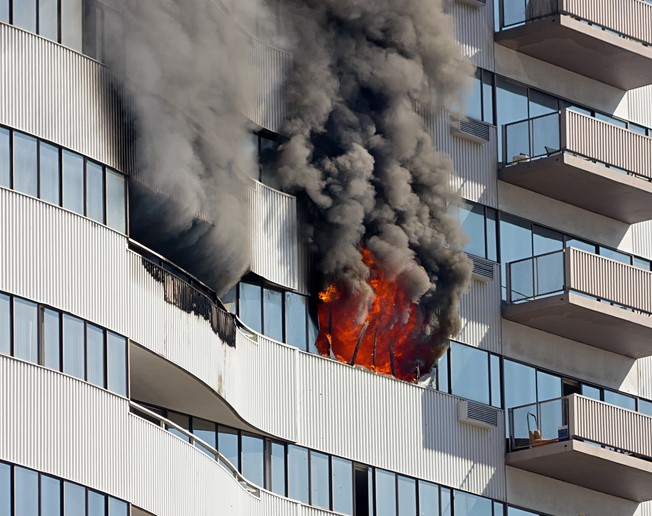
National Construction Code Update – Fire Performance of Textiles
- Tuesday, 05 April 2022
The National Construction Code (NCC) is released on a 3 year cycle, with the 2019 code being current until the 1st May 2022.
Volume 1 of the code extends to public buildings. Due to critical changes needed to address, for instance, cladding and external wall systems, an amendment to the code was issued in March 2018. The code now includes AS 5113 - 2016, Fire Propagation Testing and Classification of External Walls of Buildings. This standard although accepted by the amended code in its current form is still under review and, importantly for our interest, goes on to clarify that textile curtains are not considered part of a facade or external wall system.
The NCC now provides 2 options for demonstrating compliance:
Deemed to satisfy:
This is the simplest approach and likely to be the path for a textile application with the exception of some sarking and insulation materials that may need to be part of a Performance Solution.
The code gives performance requirements in order determine whether a product is deemed to satisfy the provisions. An example of this is the use of Section C1.10 which deals with most interior textiles and prescribes test methods and performance requirements by end use. Meeting these requirements leaves a product “deemed to satisfy” the provisions of the code.
Performance Solutions, previously referred to as Alternate solutions:
For more complex projects or installations a performance solution may need to be developed in order to demonstrate meeting the performance requirements. This may be need to involve several stakeholders such as Building Surveyors and Engineers. The code encourages interaction with the relevant Approval Authority to ensure that the final solution meets documentation and final sign-off needs. Approval authorities need to be consulted without becoming part of the solution in order to maintain neutral in their assessments.

Understanding Fire and Textiles
The fire performance requirements of interior textiles are outlined in Section C1.10 of the NCC, Australian Standards and also the Temporary Structures Code. Here, we find deemed to satisfy solutions for upholsteries, wall coverings, window furnishings, flooring and more.
The Australian Building Codes Board in its “What Practitioners Need to Know” fire presentation reminds us of the fire triangle i.e. the 3 elements that come together to make a fire possible. These are: oxygen, heat and fuel.
“Fire is a product of a chemical reaction between oxygen in the air and gases released from fuel”
Each fire goes through a growth phase then reaches flashover and becomes fully developed. It then goes into decay during which one or more of the triangle elements are reduced for example fuel is exhausted. Of interest to us is the fuel and the effect or result of its availability when oxygen and heat are present.
The burning behaviour of textile fuel is largely determined by the composition of the textile:
- Cellulosics such as cotton or viscose rayon ignite easily and spread rapidly decomposing into light ash
- Thermoplastics such as nylon and polyester tend to shrink away from heat but enough heat will cause them to melt and drip or spread a flame
- Protein fibres such as wool or silk will tend to self-extinguish when a flame source is removed
- Specialised textile fibres such as aramids are flame resistant and used in specialised applications such as aerospace and some work and sportswear.
For More Information:
Please contact us to discuss your fire testing requirements on: PH: 03 9371 2400 or Email: [email protected]
